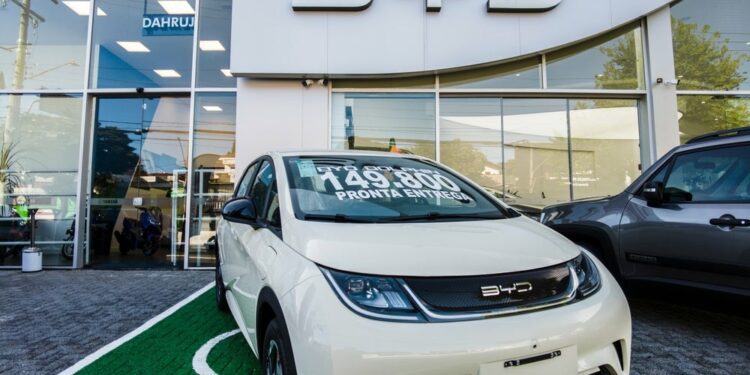Source: GlobalData
In addition to importing vehicles built in China, several manufacturers have announced plans to build them in Brazil: BYD has started construction of a facility in Brazil which is expected to produce 150,000 units per year; Great Wall is working to renovate a facility bought from Mercedes-Benz and expects to produce around 100,000 units per year there. There are numerous reasons why this could be appealing to manufacturers, but taxes on vehicles imported to Brazil are an important one. Normally, Light Vehicles have a 35% import tax when imported to Brazil; however, starting in 2015, electric vehicles had a 0% import tax. In recent years, Chinese brands have used this incentive to import many of their newest BEV models. The current government, on the other hand, has decided to end this incentive, with the import tax rising to 10% in January of this year, then 18% in July, with a further increase to 25% in July 2025 and finally 35% (the same as other vehicle types) in July 2026, making localisation more attractive. These new facilities will give easier access to the Brazilian market but also create a jumping-off point for other South American markets.
The synergy between South American markets and the new generation of Chinese-manufactured BEVs could be ideal: these markets are looking for desirable low or no-emission vehicles and the manufacturers are looking for accepting markets to help expand to a more global footprint. Once established in these markets, the opportunity to penetrate other larger markets would be enhanced. Despite resistance from North America and some European governments to the sale of these new-generation BEVs from China, establishing a foothold in South America could eventually lead to market penetration in these regions, as the vehicles would not be directly manufactured in China.
Kimberly Krafft, Analyst, Americas Vehicle Forecasts, GlobalData
This article was first published on GlobalData’s dedicated research platform, the Automotive Intelligence Center.
“Soaring Chinese vehicle sales in South America: opportunities and challenges ahead” was originally created and published by Just Auto, a GlobalData owned brand.
Â
The information on this site has been included in good faith for general informational purposes only. It is not intended to amount to advice on which you should rely, and we give no representation, warranty or guarantee, whether express or implied as to its accuracy or completeness. You must obtain professional or specialist advice before taking, or refraining from, any action on the basis of the content on our site.
Source link : http://www.bing.com/news/apiclick.aspx?ref=FexRss&aid=&tid=66d9e67e86b14feeb82e4e45b34d67e3&url=https%3A%2F%2Ffinance.yahoo.com%2Fnews%2Fsoaring-chinese-vehicle-sales-south-163417311.html&c=13785797674486266481&mkt=en-us
Author :
Publish date : 2024-09-05 05:34:00
Copyright for syndicated content belongs to the linked Source.












